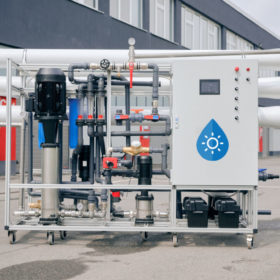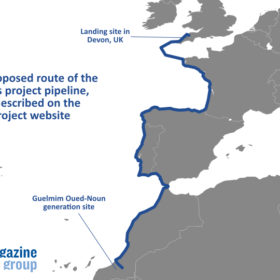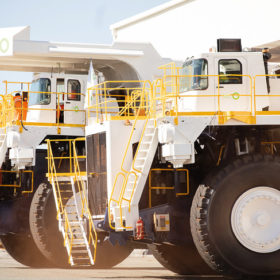Solar-powered water desalination tech for off-grid applications
Berlin-based Boreal Light has developed water desalination tech powered by PV for off-grid applications. The solution uses 460 W solar panels from Chinese module manufacturer DAH Solar and produces clean water from direct seawater at a cost of €0.50 ($0.54)/m3.
Weekend read: Is EU doing enough?
The European Union has set ambitious targets for solar PV expansion but is Brussels designing the right policies to support growth? Andreas Walstad investigates.
Guyana’s solar program set to free up state funds for other uses
The Guyana Utility Scale Solar Photovoltaic (GUYSOL) Programme will help Guyana to achieve the mission set out in its Low Carbon Development Strategy 2030, by reducing the amount that the government needs to spend on electricity subsidies.
pv magazine Award 2022 winners
Hopefuls from 40 different countries submitted entries to the pv magazine Awards in 2022, with more regions represented than ever before. This reflects the industry’s increasing global relevance and the importance all regions are placing on local innovation and production. Here we present the seven winners, who will be honored once again in a live Award ceremony on Jan. 17th, staged alongside the World Future Energy Summit in Abu Dhabi and as part of the 11th MESIA Solar Awards Ceremony.
Mibet commissions 4 MW agrivoltaic project in Japan
Mibet, a Chinese mounting system supplier, has completed what it claims is the biggest agrivoltaic installation in Japan. The solar modules for the 4 MW project in Fukushima prefecture were installed on Mibet’s agrivoltaic mounting system.
European solar manufacturers need state aid exemptions – now
If Europe is to come up with its own Inflation Reduction Act moment, and incentivize a return of EU solar manufacturing leadership, it must lift state-aid related restrictions on the PV manufacturers who have announced a willingness to build 30 GW of production lines.
How low-light solar cells can decarbonize your home
With the latest generation of household devices increasingly connected and internet-of-things (IoT)-enabled, dye-sensitized solar cells can finally realize their latent promise and help reduce the carbon footprint of billions of manufactured goods.
Next year will bring micro and mega grids
This year has witnessed upheaval in the global energy system as inflation, geopolitical conflict, and the reality of a changing climate continue to drive the transition to cleaner energy. Next year, these trends are likely to continue and accelerate as renewable energy adoption continues to grow and the inextricable link between energy security and national security is increasingly recognized. Alan Greenshields, of US-based iron-salt flow battery maker ESS Inc, offers four predictions for 2023.
COP27 failed the most climate-vulnerable
While the climate summit held at Sharm El Sheikh last month prompted pledges of raised funding for solar lanterns and single-panel systems, the money allocated to date is woefully short of what has been estimated would be required to provide universal access to electricity this decade. Drew Corbyn of Netherlands-based global off-grid solar body GOGLA, outlines three urgent courses of action to accelerate access to electricity.
Weekend read: Shining magnate
Mining magnate Andrew “Twiggy” Forrest is the founder and executive chair of Australian iron ore producer Fortescue Metals Group. The company has announced an ambitious $6.2 billion decarbonization strategy and its Fortescue Future Industries subsidiary has rapidly become a global player in green hydrogen, along with a host of other energy transition technologies. Whether it is pushing to decarbonize mining, hashing out headline-making green energy deals, or using the popular “Rick and Morty” cartoon to educate people about the potential of green hydrogen, Fortescue and its shining magnate are talking the talk. But can they walk the walk? Blake Matich reports.










